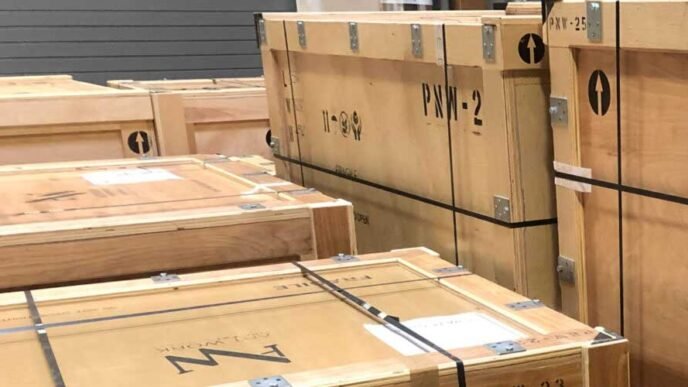Maintaining industrial equipment is crucial for ensuring efficiency, performance, and longevity. Over time, machinery can accumulate dirt, rust, grease, and other contaminants that hinder functionality and can even lead to equipment failure. Regular maintenance, particularly cleaning, is essential to keeping industrial machines in prime condition. However, cleaning industrial equipment often involves much more than a simple wipe-down—it requires advanced methods designed to target stubborn contaminants.
In this article, we explore advanced cleaning methods for revitalising industrial equipment, focusing on effective techniques that enhance both performance and lifespan.
1. The Importance of Advanced Cleaning Techniques
Industrial equipment operates in demanding environments where exposure to dust, chemicals, and corrosion is a daily occurrence. As a result, conventional cleaning methods are often insufficient for removing the buildup that accumulates over time. Advanced cleaning techniques, specifically designed for industrial use, can eliminate these tough contaminants, helping equipment function optimally while preventing wear and tear.
For example, when dealing with heavily soiled machinery or equipment covered in rust, abrasive cleaning in a blast chamber may be necessary to achieve a thorough clean. This specialised method uses high-pressure air or water to blast abrasive particles at the equipment, stripping away rust, old coatings, or dirt that has bonded with the surface. Such techniques require precision and expertise to avoid damaging the equipment while ensuring it is properly cleaned.
2. Abrasive Blasting for Heavy-Duty Cleaning
Abrasive blasting is one of the most effective methods for cleaning industrial equipment, particularly when dealing with rust, old paint, or surface contaminants. This technique uses an abrasive material, such as sand, steel grit, or glass beads, which is propelled at high speed towards the equipment’s surface. The force of the abrasive particles removes dirt, grime, and corrosion, leaving the surface clean and ready for further treatment.
- Sandblasting: Sandblasting is a commonly used form of abrasive blasting. It’s ideal for removing rust, paint, and heavy soiling from large industrial equipment. The sand particles effectively strip away the unwanted material without damaging the underlying surface, making it a popular choice for heavy machinery and metal components.
- Bead Blasting: Bead blasting uses fine glass beads as the abrasive material. This method is gentler than sandblasting and is often used for more delicate surfaces or equipment where a smooth, polished finish is required. It’s a versatile technique suitable for cleaning and restoring components like valves, pipes, and engine parts.
- Grit Blasting: Grit blasting uses sharp-edged abrasive particles to cut through layers of corrosion or hardened dirt. It’s highly effective for equipment exposed to harsh environments, such as oil rigs, mining machinery, or construction equipment, where heavy-duty cleaning is necessary to restore functionality.
Abrasive blasting is highly effective, but it must be performed with precision to avoid damaging sensitive components. It’s particularly useful for equipment that requires deep cleaning before repainting or re-coating.
3. High-Pressure Water Jetting: A Powerful and Eco-Friendly Option
High-pressure water jetting is another advanced cleaning technique that uses the power of water to remove contaminants from industrial equipment. This method uses water at extremely high pressure, often up to 40,000 psi, to blast away dirt, grime, and even hardened substances like concrete or scale buildup. Water jetting is highly effective for cleaning large equipment or areas that are difficult to reach with other cleaning methods.
- Non-Abrasive: Unlike abrasive blasting, water jetting does not rely on abrasive particles, making it a gentler cleaning method that’s ideal for equipment that may be sensitive to abrasive materials. It’s also highly effective at removing contaminants without damaging the underlying surface.
- Eco-Friendly: Water jetting is an environmentally friendly cleaning option, as it does not produce harmful dust or require the use of chemicals. The process is simple and leaves no residue, making it an excellent choice for industries where environmental concerns are a priority.
- Versatility: High-pressure water jetting is versatile and can be used in a variety of applications, from cleaning industrial tanks and pipelines to removing grease, oil, and contaminants from machinery. It is particularly useful in industries like food processing, chemical manufacturing, and energy production.
This method is also favoured for its ability to clean hard-to-reach areas, such as the interior of pipes or behind machine components. It’s a powerful and effective cleaning solution that ensures industrial equipment remains in optimal condition.
4. Dry Ice Blasting: A Non-Abrasive Solution for Delicate Equipment
For more delicate or sensitive industrial equipment, dry ice blasting offers a non-abrasive cleaning solution. This technique involves the use of dry ice pellets that are blasted at high speed onto the equipment’s surface. When the dry ice hits the surface, it sublimates (turns from solid to gas), removing dirt and contaminants without leaving any residue.
- Safe for Delicate Surfaces: Unlike abrasive cleaning methods, dry ice blasting does not damage the underlying surface, making it ideal for cleaning equipment with sensitive components, electronics, or machinery that could be damaged by traditional blasting methods.
- No Residue: One of the key benefits of dry ice blasting is that it leaves no secondary waste or residue behind. This means there’s no need for additional cleanup, and the process is much faster than other methods.
- Effective for a Range of Industries: Dry ice blasting is used in various industries, including manufacturing, aerospace, and automotive production. It’s particularly effective for removing contaminants like grease, oil, and adhesive residue from complex machinery and equipment.
While dry ice blasting is an excellent option for delicate equipment, it’s important to work with an experienced professional to ensure the technique is applied correctly.
5. Ultrasonic Cleaning: Precision Cleaning for Small Parts
For cleaning small parts or components with intricate designs, ultrasonic cleaning is a precision technique that uses high-frequency sound waves to agitate a cleaning solution. The ultrasonic waves create tiny bubbles that gently scrub away dirt, grease, and other contaminants, leaving the equipment clean without causing damage.
- Ideal for Small Parts: Ultrasonic cleaning is perfect for cleaning small, intricate parts like valves, bearings, and electronic components. It can reach areas that other cleaning methods cannot, making it a highly effective option for precision cleaning.
- Non-Abrasive and Gentle: Since ultrasonic cleaning is a non-abrasive method, it is safe for even the most delicate components. It’s often used in industries like electronics, medical device manufacturing, and automotive production, where precision cleaning is critical.
- Effective for Hard-to-Reach Areas: Ultrasonic cleaning is particularly useful for cleaning parts with complex shapes, internal cavities, or delicate components that would be difficult to clean with traditional methods.
The gentle yet thorough nature of ultrasonic cleaning makes it an excellent choice for industries where cleanliness and precision are paramount.
6. Preventive Maintenance: Keeping Equipment Clean and Functional
Regular cleaning and maintenance are essential to extending the life of industrial equipment and preventing breakdowns. By incorporating advanced cleaning methods into your maintenance schedule, you can reduce the risk of corrosion, mechanical failure, and equipment downtime. This not only ensures optimal performance but also helps you avoid costly repairs and replacements.
- Scheduled Cleanings: Develop a maintenance schedule that includes routine cleanings using the appropriate advanced techniques for your equipment. This ensures contaminants are removed before they cause significant damage.
- Monitor Equipment Conditions: Regularly inspect equipment for signs of wear, corrosion, or contamination. Addressing issues early through proper cleaning can prevent them from escalating into more serious problems.
- Use Professional Services: Advanced cleaning methods often require specialised equipment and expertise. Hiring professional services ensures the cleaning is performed correctly and safely, reducing the risk of damage to your equipment.
Revitalising industrial equipment with advanced cleaning methods is essential for maintaining functionality, performance, and longevity. Techniques like abrasive blasting, high-pressure water jetting, dry ice blasting, and ultrasonic cleaning provide tailored solutions for a variety of industries and equipment types. By incorporating these precision techniques into your maintenance routine, you can prevent rust, corrosion, and contamination, ensuring your machinery operates at its best for years to come.
Whether you’re cleaning delicate parts or heavy-duty machinery, choosing the right method and working with professionals will help you achieve optimal results, keeping your equipment clean, efficient, and in prime working condition.












